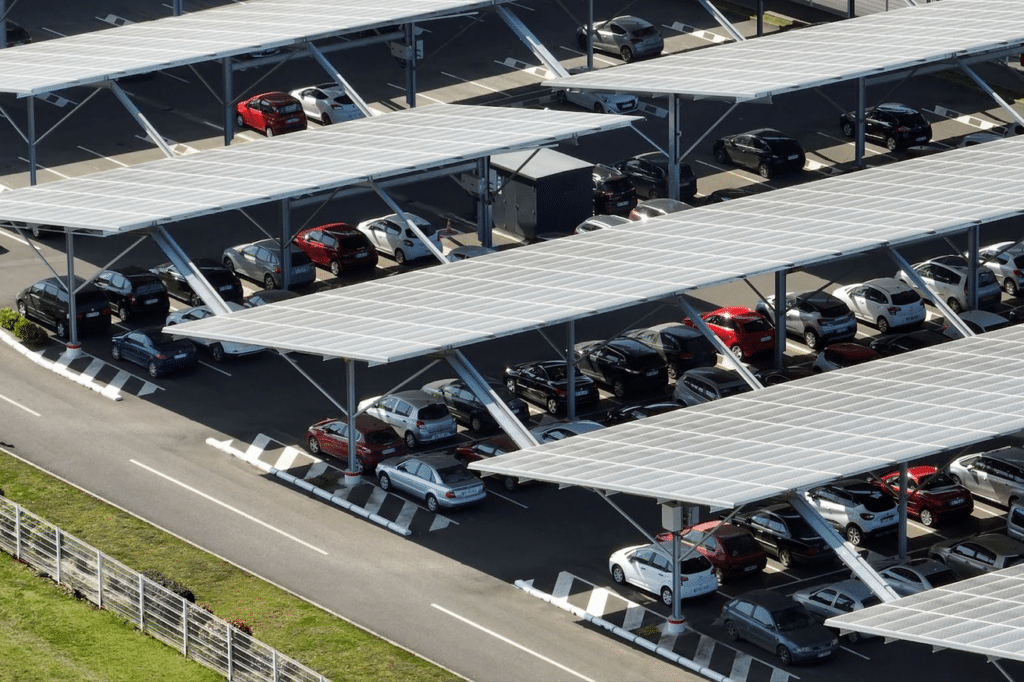Three Things Utilities Can Do to Prepare the Power Grid for More Electric Cars
April 17, 2023 | EV Connect
The U.S. is on the fast track toward electric vehicle (EV) adoption. In light of last year’s Inflation Reduction Act and the NEVI program, new data from BloomberNEF predicts that EV sales will make up more than 50% of car purchases by 2030. That represents a huge win for the EV movement. But it also raises a big question.
Can the power grid actually handle that many electric cars?
In simplest terms, yes, it can. But the deeper answer is a bit more complicated. The capacity is there, but to truly handle this new surge in EV grid demand, it will take planning on the part of utility companies across the U.S.

The Coming Takeover of Electric Cars
EV adoption is moving quickly. Aggressive legislation, technological advances, and production scale have helped push the U.S. toward a tipping point. A recent New York Times article even reported that prices for many EVs could dip below their gas counterparts in 2023 — sooner than expected.
These developments mean we’re headed toward a radically different reality for our roads. Today, there are roughly 1.7 million EVs in the U.S. The Edison Electric Institute forecasts that there will be 26.4 million by 2030, up from the original 18.4 million it forecasted in 2018. That’s a massive increase, and it means a major uptick in demand for electricity.
According to the U.S. Department of Transportation, the typical American drives their car about 13,500 miles per year. A typical EV would require about 3,857 kilowatt-hours (kWh) of electricity. For 26.4 million EVs, that’s over 101 terawatt-hours (TWh) of electricity in a year or about 2.5% of what the U.S. grid produced in 2020. Although it’s a small percentage, it’s much more than what we’re currently asking of the electrical grid.
Can the Power Grid Handle the Growing EV Demand?
Despite the big increase, this new level of demand is manageable. But it will take planning on the part of utility companies in order to handle it well. Without proper preparation, a scenario in which our busiest cities see their electrical grids regularly overloaded during peak-demand times is not at all far-fetched.
The good news is that, even though electric cars will take over eventually, the change in electrical demand won’t happen overnight. There’s time to plan and adjust, and utilities can do three things to prepare.
Expand, Upgrade and Transform the Grid
The first and most obvious thing utilities must do is continue working to transform the electrical grid. Much of today’s electrical infrastructure is outdated, and it certainly wasn’t made with a world of electric vehicles in mind.
Electrical feeders must be updated to handle a much larger load in many U.S. neighborhoods and business districts. But utilities also need to accelerate the move from a centralized grid to a more widely dispersed one that draws power from sources like residential solar panels rather than only a large central plant. A dispersed grid is better positioned to handle fluctuating demand and the natural surges that will come with more power-hungry EVs.
Improve V2G Integration
A key piece of creating a less centralized grid is establishing better vehicle-to-grid (V2G) integration. When EVs can give power back to the grid, utilities can, in effect, rely on them as a virtual extension of the existing infrastructure.
Some of this falls on auto manufacturers, which must produce more cars equipped with V2G charging capabilities. But it’s also incumbent on utilities to create the necessary buy-back programs and deploy the required software to easily draw power from EVs. Battery technology will catch up and improve what utilities and drivers can do with V2G, but utilities shouldn’t wait to start building these programs.
Offer Better Load Management for EVs
Load management is possibly the most important aspect of preparing for an EV grid load. In fact, the better utility companies can manage load, the less aggressive they have to be about overhauling the existing grid. After all, demand overload is generally less about total kWh than it is about how many kWh are called for at a given time.
Consider a grid in a large city at around 6:00 on any given weeknight. Everyone just arrived home. They’ve turned up the air conditioning, started running the oven and microwave, and flipped on the television. And, in an EV-heavy future, they’ve also plugged in their car for a recharge. This creates a massive surge in demand, and it will quickly overload the grid.
With proper load management, however, that overload is not a given. Utilities are already managing power consumption by enrolling customers in time-of-use savings programs and using smart thermostats to help manage demand. They can apply the same logic and systems to EV charging, too. EVs are often plugged in for hours at a time or overnight, and they only need a fraction of that time to fully recharge. Utilities can use tools like automated demand response (ADR) and smart charging to manage exactly when power is delivered. That way, when homes need a lot of energy to run their air conditioning, their EVs can automatically charge overnight.
How Utilities Can Prepare the Grid Now
The power grid may not need to service 26 million electric vehicles tomorrow, but 2030 isn’t far off. Now is the time to ensure that the power grid can handle electric cars because they’ll be here and hungry for power before you know it.
EV Connect is more than just a software company. Our EV Charging Management Solution is flexible and adapts to your business goals. We connect businesses with utility make-ready infrastructure programs, rebates, and charger incentives, enabling data access to track emissions reductions and support corporate sustainability goals, while providing load management, ADR and smart charging solutions to manage electrical demand better as more customers put EVs online. Our software platform provides corporations and utilities a convenient and reliable EV charging experience for your customers, your employees and your fleet.
Is your electric grid ready for the influx of EVs? Find out how EV Connect can help you make sure it is.
